Samaaro + Your CRM: Zero Integration Fee for Annual Sign-Ups Until 30 June, 2025
- 00Days
- 00Hrs
- 00Min

A lot of field marketing teams fall into the trap of being reactionary; booking venues last-minute, scrambling for speakers, and burning the midnight oil to pull off events. This cycle leads to burnout, misaligned goals, an inconsistent attendee experience, and lack of return on investment.
Strategic marketing separates the field marketing from the chaos. A strategic event calendar that is driven by defined goals, an audience understanding, cross-functionality and a systematic approach allows you to go beyond just a timeline to instituting significant growth in the field.
For a deeper dive into field marketing fundamentals, including real-world examples, templates, and implementation frameworks, check out The Complete Guide to Field Marketing for Impactful Events. This blog builds on those principles with a sharp focus on how to structure a strategic, scalable, and sales-aligned event calendar, you will learn how to develop a full event strategy, align closely with sales, personalize engagement, pick the format that fits, promote purposefully, and manage vendors with precision all to build a stronger field marketing engine that consistently drives ROI.
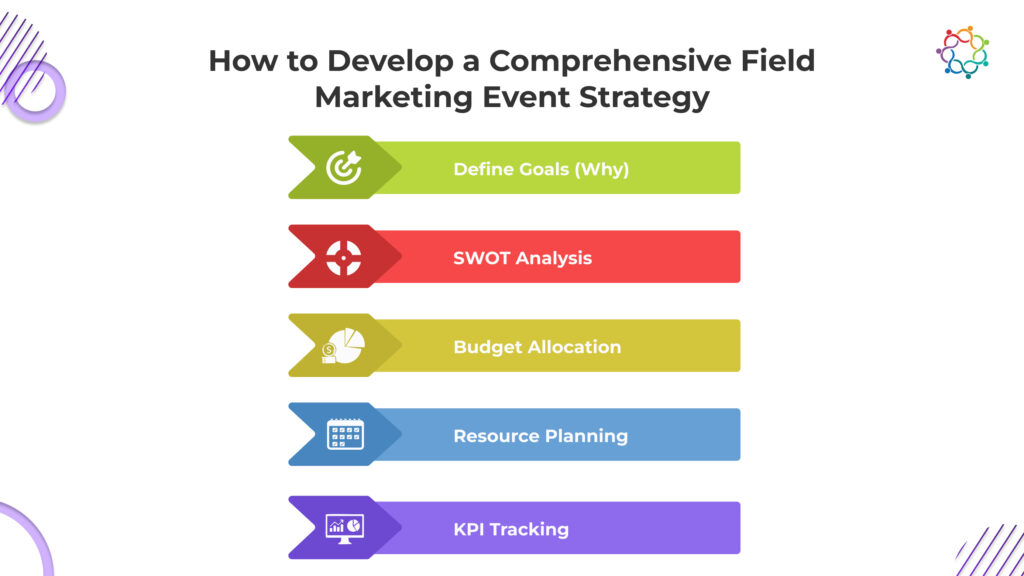
Every event need’s purpose beyond simply filling seats. Tie your field marketing goals to broader objectives whether it’s generating pipeline, establishing brand authority, growing wallet share, or retaining customers. Frame these goals with SMART objectives, such as “achieve 20% pipeline growth from events this quarter” or “book 30 customer meetings within two months.”
Consider a SaaS company that targets mid-market clients through roundtables. By aligning with sales leadership, they set a goal to drive $500K in qualified pipeline within three months. They delivered three months later they confirmed $520K from just six events. Clear goals guide calendar planning and prioritization.
A competitor in fintech discovered through their SWOT process that they had strong relationships with local banks (strength) but lacked awareness in adjacent regions (opportunity). They then designed a touring customer success roadshow to expand presence, results included 15% YoY growth in new region leads.
Not all event formats deserve equal investment. Allocate 50% of your budget to high-impact engagements (roundtables, dinners), 30% to regional roadshows, and the rest to virtual or hybrid activations for broad reach. Document headcount required and factor in agency support.
For example, one biotech firm learned they needed two dedicated event coordinators and a local agency on retainer to manage 12 annual events across three countries. This early visibility helped avoid coordination failure later.
Pipeline-influenced and closed-won deals are the strongest measures of success, but they finish the story. Marketing-qualified leads (MQLs) and sales-accepted leads (SALs) show mid-funnel traction, while attendee sentiment surveys reveal customer perception. By tracking both hard and soft metrics, your field marketing team builds credibility with leadership and aligns goals across departments.
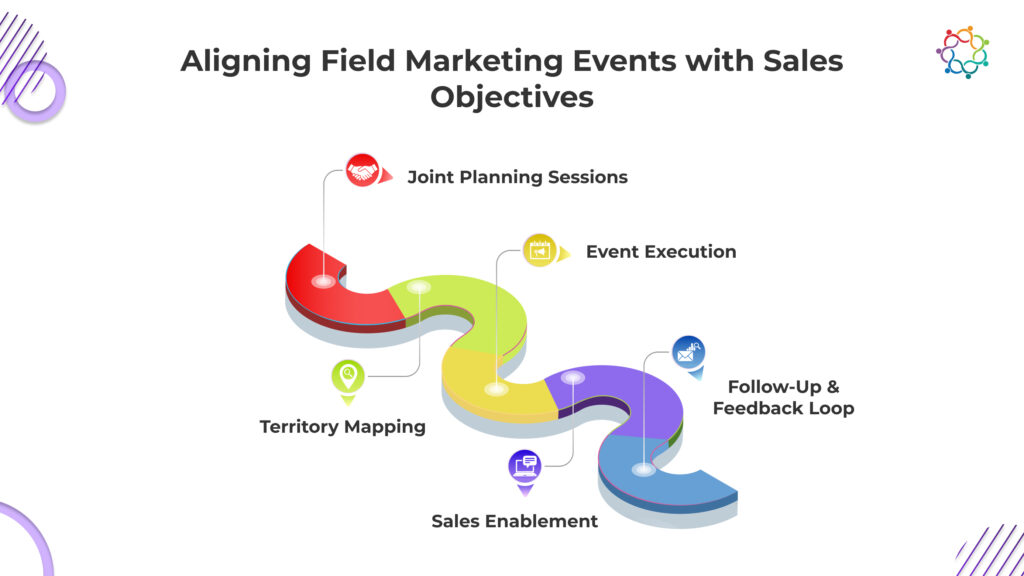
Field events don’t perform when marketing plans in isolation. Weekly or bi-weekly alignment meetings coordinated through shared dashboards are essential. Keep a living spreadsheet of upcoming events, territory goals, and lead handoff processes accessible to both teams.
One B2B software company practiced weekly field-sales syncs where event registration trends were reviewed. Halfway through a roadshow, they identified low registration in one region sales reps stepped in with targeted outreach, boosting sign-ups by 40%.
Events should reflect territory strategy. Host intimate roundtables in regions with active negotiations. Field marketers can collaborate with account-based marketing (ABM) teams to identify accounts with high propensity and build niche events around them. Aligning KPIs around specific regions ensures buy-in.
Field and sales teams should jointly own event planning. Invite reps to participate in vetting topics, speaker line-ups, and track designs.
One enterprise cybersecurity company included reps in “session ideation jams.” This built relevance, speaker alignment, and credibility.
Equip sales with effective tools: attendee lists, talking points, outreach templates, and lead-capture content. Host pre-event training to coach reps for in-event networking. Afterward, set structured follow-up with service level agreements (e.g., initial contact within 24 hours and detailed outcome reports). This bridges the gap between engagement and momentum making every event contribute to sales velocity.
Use qualitative data to shape personas. Host interviews with current customers to understand challenges, pain points, and language.
Funnel structuring is essential. Use thought-leadership webinars or topical roundtables for early stage, product demos or roadshows for mid-funnel engagement, and VIP dinners or customer advisory councils for deal closure and retention.
For example, a healthcare tech provider saw a 3x increase in adoption when they launched an executive dinner for CFOs as part of a pipeline campaign. It bypassed broad awareness and was targeted at decision-makers with ROI-focused conversations.
If your list includes companies from finance, manufacturing, and retail, design event tracks with relevant insights for each. Even at a single city summit, breakout tracks by vertical or job function can deliver deeper connections and follow-up success.
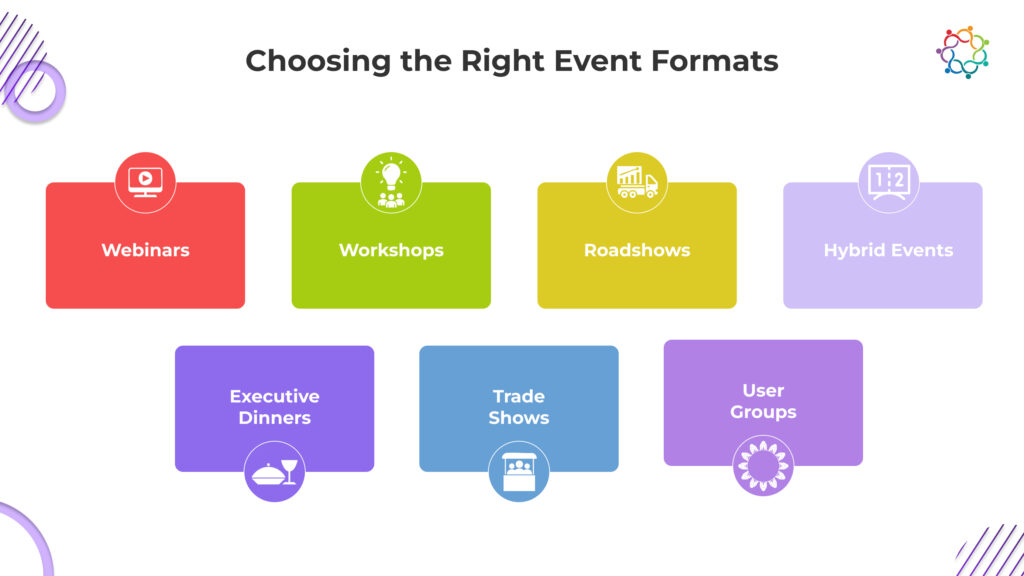
A financial services firm uses hybrid summits to blend local sponsor-hosted tables with live-streamed keynote sessions balancing reach, sponsorship ROI, and brand control.
Clarify the goal, audience, and resources to pick the right format. A workshop may be more expensive on a per-person basis than a webinar, but if goal is education or qualification, it may deliver greater ROI.
Track cost per opportunity created and cost per closed deal for each format. Use this data to iterate and optimize your calendar.
Start small. Test a local roundtable or breakfast chat. Compare outcomes with prior formats. One SaaS marketer did six pilot events, executive brunches, roadshows, half-day seminars and found executive dinners generated 1.5x more pipeline per event. The return justified the investment.
Effective promotion isn’t just about getting people to register it’s about priming them for attendance.
Your vendors are more than just contractors. They’re brand ambassadors.
Engage them through an RFP that explains goals, audience expectations, and experience to consider. Consider references, visit venues, and audit more than one AV provider.
Once in the execution phase, treat vendors as team members. Share production timelines, rehearsal plans, and what you expect with the attendee flow. Hold a vendor huddle before setup and at some point during the event to triage issues quickly.
After the event, review KPIs and service levels. Ask vendors where they could have improved and share your feedback. Not only will it provide you actionable insights for the next execution, it will nurture the relationship and possibly create vendor buy-in that earns you favorable updates and pricing.
Strategic field marketing is about doing the right events with focus, intention and alignment, not necessarily doing more events. A thoughtfully built field marketing calendar is more than a locking set of plans; it can catalyze your teams to focus on business impact instead of being busy.
If you can anchor your field marketing activities with a clear set of goals, work in close partnership with sales, truly understand your audience and select formats that match both your message and the moment, you are on your way to planning a field event that delivers tangible returns instead of merely good vibes.
The operational backbone is also very important: promotional cadence, pre-event engagement, vendor continuity and measurement cadence. While not usually what marketing strategies are built upon, it’s the combination of these elements that actually make a good strategy actionable in the real world.
The field marketing landscape will continue to change over time given the rise of new technologies, hybrid formats, and changing expectations of buyers, yet one thing will remain: the importance of having a thoughtful and data-informed lens; that will always set you apart.
Start planning with purpose. Your calendar, and your pipeline, will thank you.

Built for modern marketing teams, Samaaro’s AI-powered event-tech platform helps you run events more efficiently, reduce manual work, engage attendees, capture qualified leads and gain real-time visibility into your events’ performance.
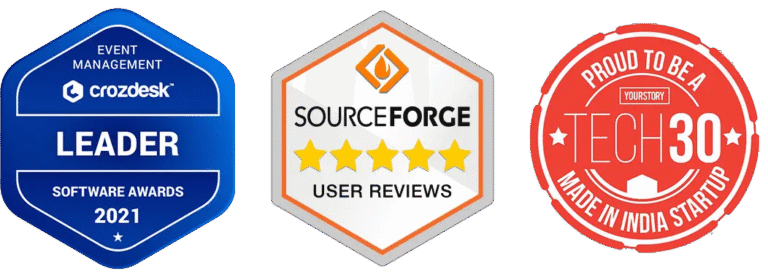
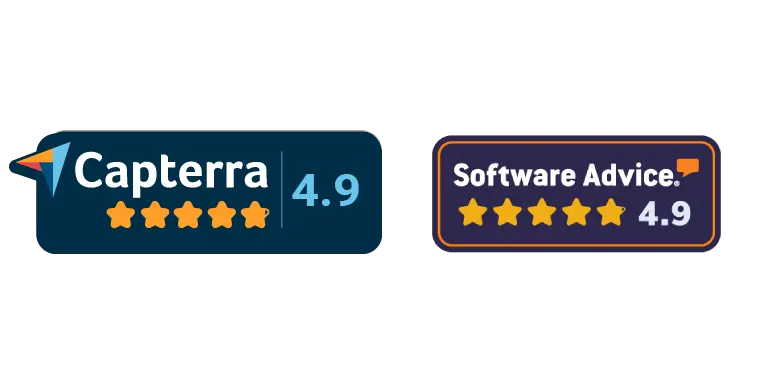
© 2025 — Samaaro. All Rights Reserved.